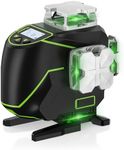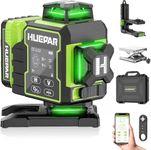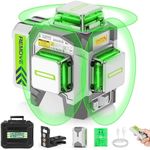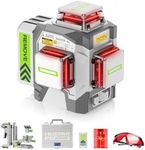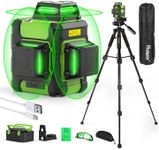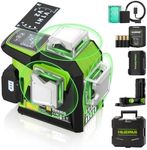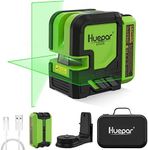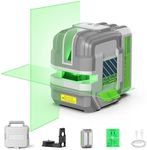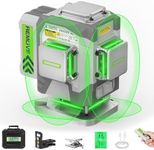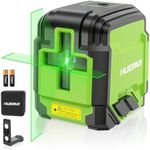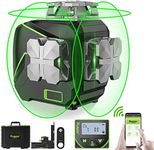Buying Guide for the Best Huepar Laser Levels
Choosing the right laser level can make a significant difference in the accuracy and efficiency of your projects. Whether you're a professional contractor or a DIY enthusiast, understanding the key specifications of laser levels will help you make an informed decision. Here are the essential specs to consider and how to navigate them to find the best fit for your needs.AccuracyAccuracy refers to how close the laser level's measurements are to the actual value. This is crucial because higher accuracy ensures that your lines are perfectly level or plumb, which is essential for tasks like installing shelves, framing, or tiling. Accuracy is usually measured in millimeters per meter (mm/m) or inches per 100 feet. For high-precision tasks, look for a laser level with an accuracy of ±1 mm/m or better. For general home use, an accuracy of ±3 mm/m may be sufficient.
RangeThe range of a laser level indicates the maximum distance the laser can project a visible line. This is important for larger projects where you need to cover more ground without moving the device. The range can vary from 15 meters (50 feet) to over 100 meters (330 feet). For indoor projects or small rooms, a shorter range is adequate. For outdoor projects or large construction sites, opt for a laser level with a longer range.
Self-LevelingSelf-leveling is a feature that allows the laser level to automatically find and maintain level within a certain range, usually within a few degrees. This is important because it saves time and ensures accuracy without manual adjustments. Self-leveling laser levels are ideal for users who need quick setup and reliable performance. If you frequently work on uneven surfaces, this feature is a must-have.
Beam OrientationBeam orientation refers to the direction in which the laser projects its lines. Common orientations include horizontal, vertical, and cross-line (both horizontal and vertical). This is important because different projects require different orientations. For example, horizontal beams are great for leveling pictures, while vertical beams are useful for aligning tiles. Cross-line lasers are versatile and can handle a variety of tasks. Choose the orientation based on the types of projects you typically undertake.
DurabilityDurability refers to how well the laser level can withstand tough working conditions, including dust, water, and impacts. This is important for ensuring the longevity of the tool, especially if you work in harsh environments. Look for laser levels with an IP rating (Ingress Protection) that indicates resistance to dust and water. An IP54 rating is generally good for most conditions, while higher ratings like IP65 offer better protection. Consider your work environment and choose a laser level that can handle it.
Battery LifeBattery life indicates how long the laser level can operate on a single charge or set of batteries. This is important for uninterrupted work, especially on longer projects. Battery life can range from a few hours to over 20 hours. For occasional use, shorter battery life may be acceptable. For extended projects or professional use, look for laser levels with longer battery life or those that offer rechargeable battery options.
Mounting OptionsMounting options refer to the different ways you can set up the laser level, such as using a tripod, wall mount, or magnetic base. This is important for flexibility and ease of use in various situations. If you need to frequently adjust the height or position of the laser, a tripod is very useful. For tasks that require the laser to be fixed in one spot, a wall mount or magnetic base can be more convenient. Consider the types of projects you do and choose a laser level with the appropriate mounting options.
